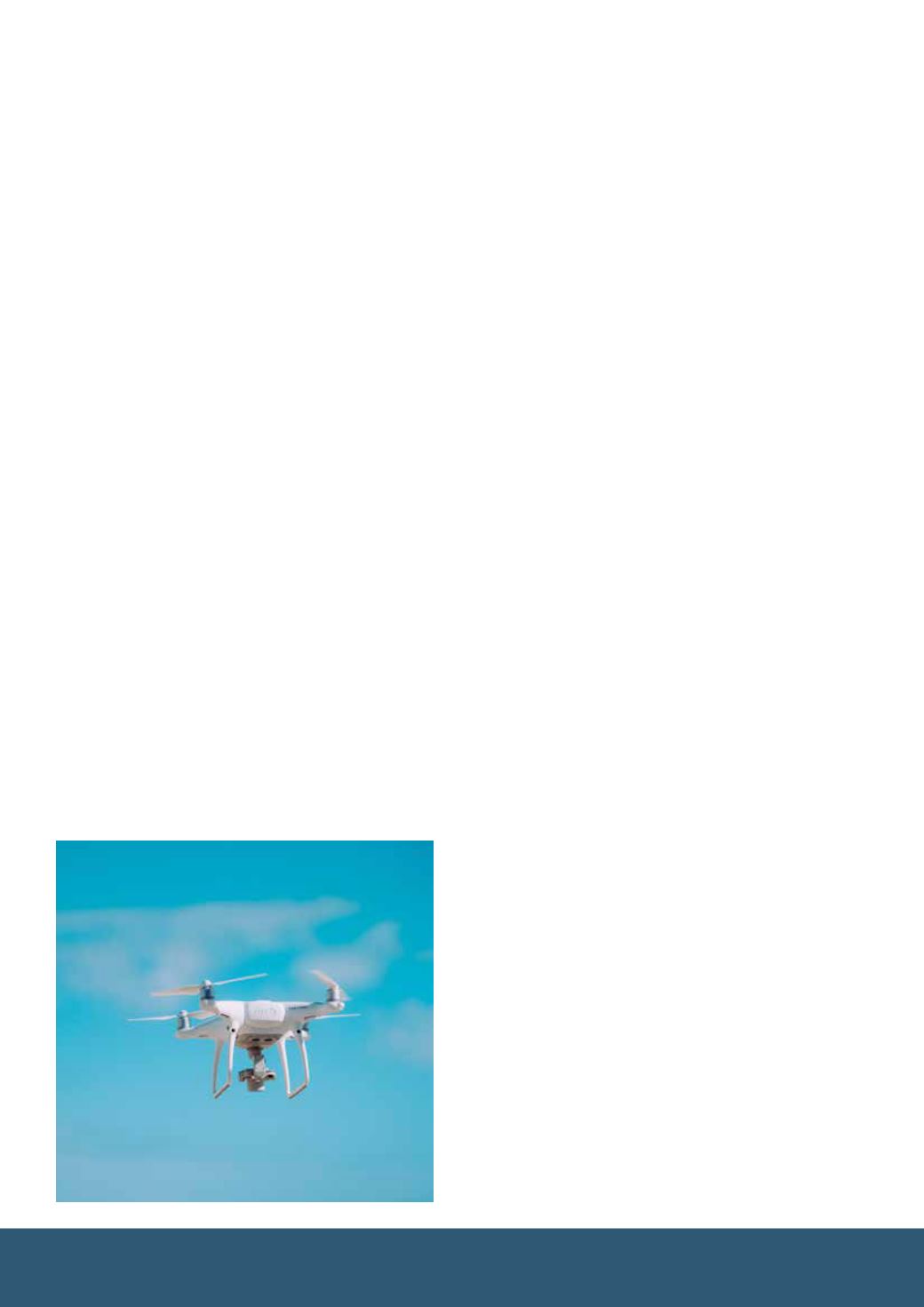
30
ISSUES: Privacy
Chapter 2: Surveillance
Drones
The ICO recommends that users of drones – also called unmanned aerial systems
(UAS) or unmanned aerial vehicles (UAVs) – with cameras should operate them in a
responsible way to respect the privacy of others.
Are drones covered by the Data
Protection Act (DPA)?
If a drone has a camera, its use has the
potential to be covered by the DPA.
Is it OK to use drones with
cameras?
If you are using a drone with a camera,
there could be a privacy risk to other
people. Follow our tips below to help
ensure you respect people’s privacy
when using your drone.
How can I use my drone
responsibly?
Tips on responsible use of drones:
Ö
Ö
Let people know before you start
recording. In some scenarios this
is going to be quite easy because
you will know everyone within
close view (for example, if you are
taking a group photo at a family
barbeque). In other scenarios, for
example at the beach or the park,
this is going to be much more
difficult so you’ll need to apply
some common sense before you
start.
Ö
Ö
Consider your surroundings. If
you are recording images beyond
your home, a drone may intrude
on the privacy of others where
they expect their privacy to
be respected (such as in their
back garden). It is unlikely that
you would want a drone to be
hovering outside your window
so be considerate to others and
don’t hover outside theirs.
Ö
Ö
Get to know your camera first.
It is a good idea to get to know
the capability of your camera
in a controlled situation to
understand how it works. What
is the quality of the image? How
powerful is the zoom? Can you
control when it starts and stops
recording? Drone cameras are
capable of taking unusual and
creative pictures from original
vantage points. Knowing the
capabilities of your camera will
help you to reduce the risk of
privacy intrusion.
Ö
Ö
Plan your flight. Your drone’s
battery life is likely to be short. By
understanding its capabilities you
will be able to make best use of its
flight and it will be easier to plan
how to avoid invading the privacy
of other people. For example, it
may be more privacy-friendly to
launch from a different location
rather than flying close to other
people or their property.
Ö
Ö
Keep
you
and your drone in
view. You won’t want
to lose it, and if you
are
clearly
visible
then it will be easier
for members of the
public to know that
you are the person
responsible for the
drone.
Ö
Ö
Think before
sharing. Once your
drone has landed,
think carefully about
who’s going to be
looking at the images,
particularly if you’re
thinking about posting them
on social media. Avoid sharing
images that could have unfair or
harmful consequences. Apply the
same commonsense approach
that you would with images or
video recorded by a smartphone
or digital camera.
Ö
Ö
Keep the images safe. The images
you have taken may be saved on
an SD card or USB drive attached
to the drone or the camera. If they
are not necessary, then don’t keep
them. If you do want to keep them,
then make sure they are kept in a
safe place.
Other laws
Ö
Ö
Other laws that protect individuals
from harassment may apply when
using your drone. It is worth
checking which laws you need to
be aware of before you fly your
drone to avoid any unexpected
complaints or disputes.
Ö
Ö
The safe use of drones is regulated
by the Civil Aviation Authority.
For guidance about this, see UAS
on the Civil Aviation Authority
website.
Can I use my drone for work?
As with personal use, if you are
using your drone for a more formal,
professional purpose, then it is
important that you understand your
legal obligations as a data controller as
the situation will be different.
For more information, read the CCTV
code (for organisations), which has a
section about drones (referred to as
UAS in the code).
Ö
Ö
The above information is reprinted
with kind permission from the
Information
Commissioner’s
Office. Please visit
for further information.
© Information
Commissioner’s Office 2017


